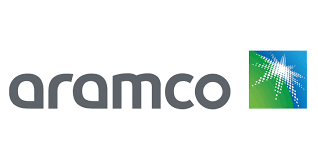Logistics and Supply Chain Management Strategies Course
Introduction
To minimize operational costs and enhance quality and productivity, organizations must develop and execute well-crafted policies for the procurement and sourcing of materials, goods, equipment, and services. This Logistics and Supply Chain Management training course addresses essential components of procurement and logistics management.
The course offers a professional qualification in Logistics and Supply Chain Management Strategies, exploring the complexities of logistics management and current challenges.
Objectives
By the end of this Logistics and Supply Chain Management Strategies course, participants will be able to:
- Apply best practices learned to the field and industry.
- Establish a clear vision and mission for benchmarking with leading companies.
- Understand key supply chain drivers from logistics and demand perspectives.
- Recognize fundamental components of procurement and supply chain logistics training.
- Elucidate the importance of strategic procurement.
- Inspect examples of best practices in procurement and supply chain logistics management.
- Set and maintain optimal prices.
- Contribute to developing expenditure analysis skills.
- Develop a comprehensive and cross-border logistics perspective.
- Explain the importance of collaboration with supply chain partners.
- Assess the impact of Key Performance Indicators (KPIs) on supply chain performance.
Training Methodology
- Simulations
- Workshops
- Role plays
- Group discussions
- Interactive exercises
Course Outline
Unit 1: View of Procurement Activity as a System that Adds Value to It in a Dynamic Interactive Framework
- The system approach and the functional approach: how they relate.
- Primary objectives for almost all purchasing.
- Formulation of strategic procurement targets.
- Outline of the procurement activity.
- Procurement function within logistics and supply.
Unit 2: Tactical Procurement Strategy Shifts from Military to Corporate
- Decisions to make or go to the market.
- Foreign investment considerations.
- Identifying and building alliances.
- Intercompany trade dynamics.
- Countertrade and reciprocity.
- Producing a supplier strategy.
- Procurement strategy integration.
- Organizing the purchasing function.
Unit 3: Realizing Tactical Procurement Solutions
- Involving suppliers in projects.
- Procurement value management.
- Quality assurance in supply chain management.
- Supplier selection and evaluation criteria.
- Supply chain rating.
- Supply chain contract management.
- IT applications, e-supply, and e-procurement tools.
- Developing and implementing compliance policies.
- Staffing the procurement section.
Unit 4: Managing The Operational Procurement Strategies
- Proper ordering practices.
- Solving quality problems.
- Follow-up and overdue orders.
- Expediting.
- Payment processes.
- Reducing procurement costs: small-value purchase orders.
Unit 5: Contingency Procurement Decisions
- Preparation for various contingency situations.
- Efficiently dealing with contingencies in the supply chain.
Unit 6: Promotion of Economy by Avoiding Audit Assessment Costs
- Detailed spending analysis.
- Understanding and computing the total cost of ownership.
- Influencing supplier performance standards.
Unit 7: Clearer Concept on Logistics and Supply Chain
- Concepts of logistics and supply chain management.
- Interrelationship among buying, making, moving, and selling.
- Historical changes and effects on organizations.
- Dynamics of the supply chain.
- Supply Chain Operation Reference Models.
- Theory of Constraints.
Unit 8: Important Factors of Supply Chain Management
- Cost/service dichotomy.
- Basic rules of customer care.
- Structural arrangements of the corporate body.
- Principles of inventories.
- Lead times through the entire chain.
- Value addition.
- Production options or alterations.
- Trade-offs.
Unit 9: Supply Chain View’s Payoff
- Sub-functional conflict and gains across levels.
- Bringing together all acquisition costs.
- Recognizing competitive edge.
- Demand magnification and the “Forrester” effect.
- Impact of uncertainty and unresponsiveness.
- Current handling of supply chains by organizations.
- Improving supply chain management systems.
Unit 10: Strategic Approaches and Impacts to Supplier/Customer Relationships
- Lot size/order quantities.
- Driving expenses down.
- Viewing new products and providing assistance.
- Removing barriers across the company and external market.
- Interfacing as a management approach.
- Product segmentation and format.
- Supply chain relation to corporate strategy.
- Planning the supply chain.
- Outsourcing as an option.
- Postponement and consolidation.
- Demand planning, Quick Response (QR), Vendor Managed Inventory (VMI), CPFR.
- Lean supply chain management.
Unit 11: Making Supply Chain Improvements
- Case studies of manufacturers and retailers.
- Critical learnings and fundamental features of practice.
- Oil and gas industry insights (UK, 2013).
- Questions to be addressed.
- Required changes with suppliers and customers.
- Internal organizational and management policy changes.
- Potential actions and lessons from experience.
- Preventing increased stock holdings and market share rise.
- Overcoming conventional silo management.
- Quick 5-step approach to Logistics and Supplier Development.
- Rules of the supply chain for effectiveness.


















